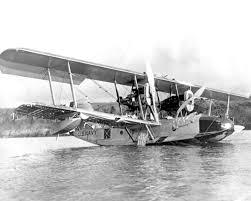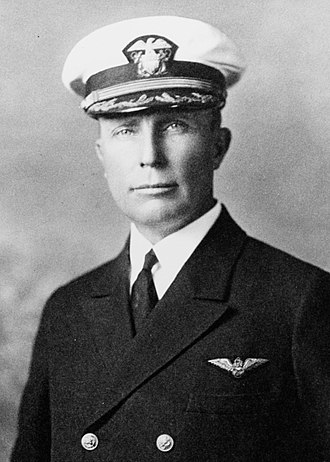RODGERS-JOHN
JOHN RODGERS

CDR

SECOND NAVAL AVIATOR
CDR John Rodgers was born on January 15, 1881 in Washington, DC, a member of one of the most famous families in U.S. Navy history. His great-grandfather, Commodore John Rodgers (1773-1838), was the President of the Board of Naval Commissioners following the War of 1812. His father, RADM John Rodgers (1812-1882), led exploring expeditions in Chinese waters and through the Bering Strait in 1855.
CDR John Rodgers was a pioneer of Naval Aviation and reportedly began his Naval career when he served aboard the cruiser USS Columbia during the Spanish American War. In 1899 he entered the Naval Academy, from which he graduated in 1903. His early naval career included service on ships of various types before studying flying in 1911 and becoming the second American naval officer to fly for the U.S. Navy. On February 1, 1911, then LT Rodgers participated in an experiment involving a man-lifting kite. A train of eleven man-raising kites lifted him to 400 feet off the deck of USS Pennsylvania (ACR-4) as the ship steamed at a 12-knot speed. While suspended from a kite cable 100-yards astern, he made observations and took photographs for 15 minutes, signaling his observations back to the ship. He reportedly had a clear view for over 40-miles. On March 17, 1911, LT Rodgers reported to the Wright Company in Dayton, Ohio, to receive flight training in response to the Wright brothers offer to train one pilot for the Navy. At this time one Navy officer had already become a certified pilot but he did not receive his instruction from the Wrights.
In September 1911, LT Rodgers completed a flight from the Naval Academy in Maryland to Washington, DC, the first time such a flight had been attempted. Following a railroad, he reached Washington and then circled the Washington Monument for 15-minutes before landing near the White House. At the time, it was one of the longest, most successful flights in naval aviation. About 10-days later he flew from Maryland to Baltimore and landed in a field 200-yards from his parents’ home, thus becoming the first naval aviator to fly home for a visit. In late November 1911, LT Rodgers developed a life preserver for use in hydroplane flights. It was worn similar to a baseball catcher’s breast protector and consisted of rubber tubes that were inflated along with the rest of the vest when in use over water.
With the commencement of World War One, Rodgers returned to sea duty and served in the submarine service and on North Sea mine barrage duty as he commanded Submarine Division 1 of the Atlantic Fleet. He received the Navy Distinguished Service Medal for outstanding work on minesweeping operations in the North Sea. Following the war, he was promoted to the rank of Commander in November 1920 and returned to aviation assignments. From 1922 to 1925 he was commander of the Naval Air Station, Pearl Harbor, Hawaii.
In 1925 he served as commander Aircraft Squadrons, Battle Fleet. This same year he led the first attempt at a non-stop flight from California to Hawaii. Given the technology of the time, this tested the limits of both aircraft range and the accuracy of aerial navigation. Two flying boat PN-9 planes departed San Pablo Bay in California (near San Francisco) on August 31, 1925. Unfortunately, one of the planes developed engine failure and was forced to land in the ocean about five hours into its flight. It was safely recovered by one of the guard ships that had been spaced 200-miles apart between California and Hawaii. Rodgers’s flight proceeded with few difficulties for more than 1,200 miles. A weaker than predicted tailwind made the fuel consumption higher than expected and it became necessary to land in the ocean and refuel. The plane headed for a refueling ship, but limitations of the navigation technology and erroneous navigation information provided by the ship caused Rodgers and his crew to miss the ship. They were forced to land in the ocean on September 1 when fuel was exhausted. The plane’s radio could not transmit when the plane was floating on the water and a multi-day search by planes and a large number of ships failed to locate them. Rodgers and his crew used fabric from a wing to make a sail and headed toward Hawaii, several hundred miles away. On September 10 they sighted the Hawaiian island of Kauai and were picked up by submarine USS R-4 about fifteen miles from the island. Despite not reaching Hawaii by air, the flight established a new non-stop air distance record for seaplanes of 1992 miles.
In recognition of his sterling qualities as an aviator and his ability as a seaman and navigator, CDR Rodgers was appointed Assistant Chief of the Bureau of Naval Aeronautics. Office work in Washington was not to his taste or temperament and on August 16, 1926 he was placed in command of a new scouting seaplane squadron. Eleven days later he departed Naval Air Station, Washington, for Philadelphia, where he was to inspect new planes at an aircraft factory. Nearing Philadelphia, his plane fell from a low altitude into the shallow water of the Delaware River. CDR Rodgers was pinned into the cockpit but after an hour of intense suffering he was finally released and taken to a Naval Hospital where he died of his injuries on August 27, 1926. At the time of his death, he was listed for promotion to Captain.

PN-9 - 1925
Submitted by CDR Roy A. Mosteller, USNR (Ret)

